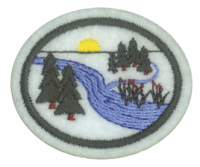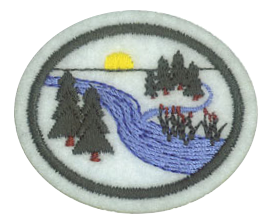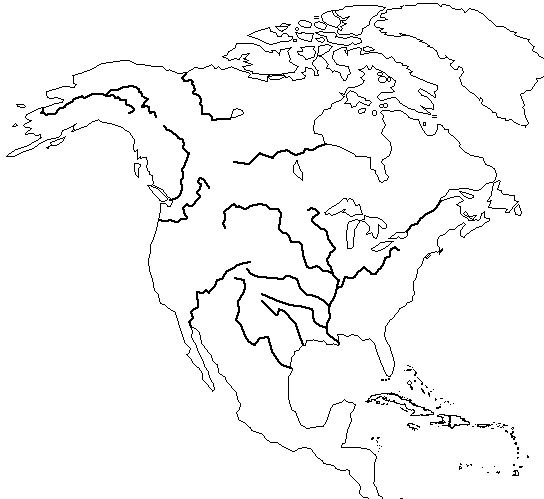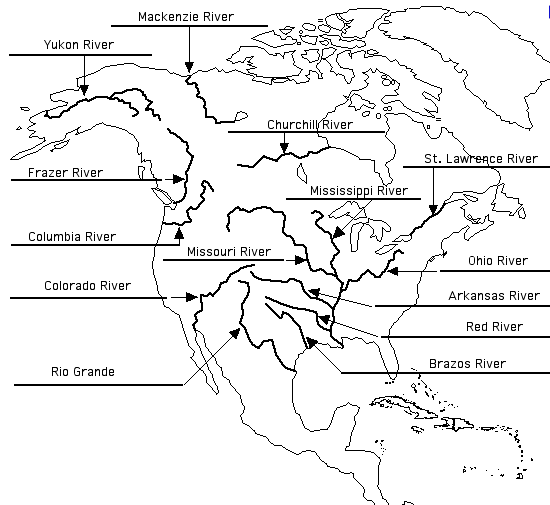Difference between revisions of "AY Honors/Rivers and Streams/Answer Key/es"
(Created page with "</noinclude> <!-- 4. Identificar en un mapa los ríos principales de su continente. Conocer al menos cinco de sus exploradores. Leer una historia de uno de los exploradores. -->") |
(Created page with "<noinclude>") |
||
| Line 151: | Line 151: | ||
<!-- 7. Hacer una lista de al menos cinco plantas que viven en o a la orilla de un río. --> | <!-- 7. Hacer una lista de al menos cinco plantas que viven en o a la orilla de un río. --> | ||
| − | + | <noinclude></noinclude> | |
| − | <noinclude | ||
| − | |||
{{CloseReq}} <!-- 7 --> | {{CloseReq}} <!-- 7 --> | ||
{{ansreq|page={{#titleparts:{{PAGENAME}}|2|1}}|num=8}} | {{ansreq|page={{#titleparts:{{PAGENAME}}|2|1}}|num=8}} | ||
| − | <noinclude> | + | <noinclude></noinclude> |
| − | </noinclude> | + | <!-- 8. Hacer una lista de al menos cinco aves que viven en o cerca de un río. --> |
| − | <!-- 8. | ||
| − | |||
| − | |||
| − | |||
| − | |||
| − | |||
| − | |||
| − | |||
| − | |||
| − | |||
| − | |||
<div lang="en" dir="ltr" class="mw-content-ltr"> | <div lang="en" dir="ltr" class="mw-content-ltr"> | ||
Revision as of 14:58, 22 April 2021
Nivel de destreza
2
Año
2011
Version
29.12.2025
Autoridad de aprobación
Asociación General
1
2
2a
2b
2c
2d
2e
2f
2g
2h
2i
2j
2k
2l
2m
2n
2o
2p
2q
2r
2s
2t
3
4
The answers here for the North American continent only. You can use this map to label; the second map that follows is labeled.
Many of the explorers who discovered the rivers in the east of North America were French. Many of the western rivers in North America were found by English explorers. The southern rivers were mainly discovered by Spanish explorers.
- Yukon River, Robert Campbell, John Bell, and Alexander H. Murray
- Fraser River, Simon Fraser
- Columbia River, Robert Gray
- Churchill River, Thomas Frobisher
- St. Lawrence River, Jacques Cartier
- Mississippi River Louis Joliet and Jesuit Jacques Marquette
- Missouri River, James Mackay
- Colorado River, Hernando de Alarcon
- Rio Grande River, Don Juan Pérez de Oñate y Salazar
- Ohio River, La Salle
5
6
7
8
9
- River otter
- Muskrat
- Mink
- Beaver
- Moose
10
Three examples are given below. There are many others. Try to choose on that is near your location.
Purple Loosestrife
Purple Loosestrife is a perennial aquatic plant, which flowers in late summer to early fall. It has reddish purple to magenta flowering spikes top somewhat square stems that can grow to nine feet tall. There are many members of the loosestrife family, Lythraceae, 12 are found in the continental US with 3 being introduced: Lythrum hyssopifolia, L. salicaria, and L. virgatum. Purple loosestrife is detrimental because it is invasive and competitive. It crowds out native plants that are used by native wildlife for ground cover, food and nesting material. Normally our wetlands are a complex mosaic of many species with high diversity that provide excellent habitat for many species of birds, mammals, and fish. The only way to save the water way is to dredge up the root systems, whoever there are always some left to reproduce.
Zebra Mussels
Zebra mussels were brought from the Black Sea region just before 1986 to Lake Erie in the ballast water of a ship. They were discovered when they completely clogged the water intake pipe for a Monroe, Michigan community. They have since spread through all the great lakes and to the Gulf of Mexico. They are also in many inland lakes, most likely due to spread on recreational boats. The zebra mussels attach to the outside of the native mussels and smother them. They have changed the food web of the lake system. They have clarified the water to the degree that algae can thrive to a depth of 60 feet. When the algae bloom naturally dies off, there is a lot more to die and when it does, it is washed up on the beach and smells like raw sewage. Scraping the mussels off boat and water pipes is about all that can be done. The numbers seem to be declining since the waters in the great lakes have cleared up since the mussels have arrived.
Asian Carp
Asian Carp were imported by catfish farmers in the 1970’s to remove algae out of their ponds. During floods in the 1990’s some of the catfish escaped when the ponds overflowed into the Mississippi River. They have moved north toward the Great Lakes. Dams are being build to try to limit their spread. They grow very fast and very large (100 pounds) and eat the food, which the native fish normally eat. It remains to be seen what will happen to the native fish.
11
Dwarf Wedge Mussel (Alasmidonta heterodon): Endangered
This brown or yellowish-brown freshwater mussel is about 1.5 inches in length. Their life span is about 10 years. They feed on algae and other suspended particulates. These mussels live in running water of small brooks to large rivers, mostly on the East Coast. Water pollution, including sediments and chemicals from agriculture and other development projects such as golf courses, have been implicated in the mussel's decline.
Interior Population of the Least Tern: Endangered
The interior population of the least tern breeds in isolated areas along the Missouri, Mississippi, Ohio, Red, and Rio Grande river systems. From late April to August, terns use barren to sparsely vegetated sandbars along rivers, sand and gravel pits, or lake and reservoir shorelines. Terns nest in a shallow hole scraped in an open sandy area, gravelly patch, or exposed flat. Dams, reservoirs, and other changes to river systems have eliminated most historic least tern habitat. Recreational activities on rivers and sandbars can disturb the nesting terns, causing them to abandon their nests.”
Pallid Sturgeon: Endangered
These bottom-feeding fish like large, silty rivers with rocky or sandy bottoms. They can be found in backwaters, side channels, sloughs, and in the main channels. The werwe once located throughout the Missouri River from Montana to the Mississippi River and then south to Louisiana. Now, most of the Pallid Sturgeon’s habitat has been altered by dams, reservoirs, and channelization.
Decurrent False Aster: Threatened
“This plant is found on moist, sandy floodplains and prairie wetlands along the Illinois River. Although not very tolerant to prolonged flooding, the plant relies on periodic flooding to scour away other plants that compete for the same habitat. For example, the great flood of 1993 had positive impacts on some populations of this plant. Excessive silting during floods, however, which results from poor soil conservation practices, smothers the seeds and seedlings, is a major cause of the Decurrent False Aster's decline.”
12
Here are some examples:
- Shall We Gather at the River
- I’ve Got a River of Life Flowing Out of Me
- I’ve Got Peace Like River
- I Shall Not Be Moved
- Humble Me
- Michael Row your Boat Ashore
13
14
The wide, deep river, that offers a highway for the traffic and travel of nations, is valued as a world-wide benefit; but what of the little rills that help to form this noble stream? Were it not for them, the river would disappear. Upon them its very existence depends. So men called to lead in some great work are honored as if its success were due to them alone; but that success required the faithful co-operation of humbler workers almost without number--workers of whom the world knows nothing. Tasks uncommended, labor without recognition, is the lot of most of the world's toilers. And in such a lot many are filled with discontent. They feel that life is wasted. But the little rill that makes its noiseless way through grove and meadow, bearing health and fertility and beauty, is as useful in its way as the broad river. And in contributing to the river's life, it helps achieve that which alone it could never have accomplished.
The lesson is one needed by many. Talent is too much idolized, and station too much coveted. There are too many who will do nothing unless they are recognized as leaders; too many who must receive praise, or they have no interest to labor. What we need to learn is faithfulness in making the utmost use of the powers and opportunities we have, and contentment in the lot to which Heaven assigns us. {Education pg.116-117}
15
15a
A microscope will really help with this project.
15b
15c
15d
If you are into Geocaching, look for or consider sponsoring a CITO cache event. You can also look for a river conservation group. You may have success contacting the local government for info on a river or stream that needs cleanup and support for getting it done (free trash disposal for example).
15e
References:
- http://www.ucmp.berkeley.edu/glossary/gloss5/biome/aquatic.html
- http://www.enature.com/fieldguides/view_default.asp?curGroupID=3&size=475&size=474&habitat=1014&Submit=Search
- http://www.doc.govt.nz/Regional-Info/010~Canterbury/004~Conservation/Project-River-Recovery/Braided-River-Field-Guide/001~Braided-River-Field-Guide-contents.asp
- http://lib.colostate.edu/wildlife/freshwater_biome.html
- http://web4.msue.msu.edu/mnfi/data/specialplants.cfm
- http://web4.msue.msu.edu/mnfi/data/specialplants.cfm
- http://www.pbs.org/weta/thewest/people/a_c/clark.htm --Clark
- http://www.pbs.org/weta/thewest/people/i_r/lewis.htm -- Lewis
- http://www.pbs.org/weta/thewest/people/s_z/sacagawea.htm -- Sacagawea
- http://bluebook.state.or.us/notable/notgray.htm -- Robert Gray
- http://www.britannica.com/eb/article-9013128?tocId=9013128 -- Simon Fraser
- http://www.biographi.ca/EN/ShowBio.asp?BioId=40133 -- Robert Campbell




